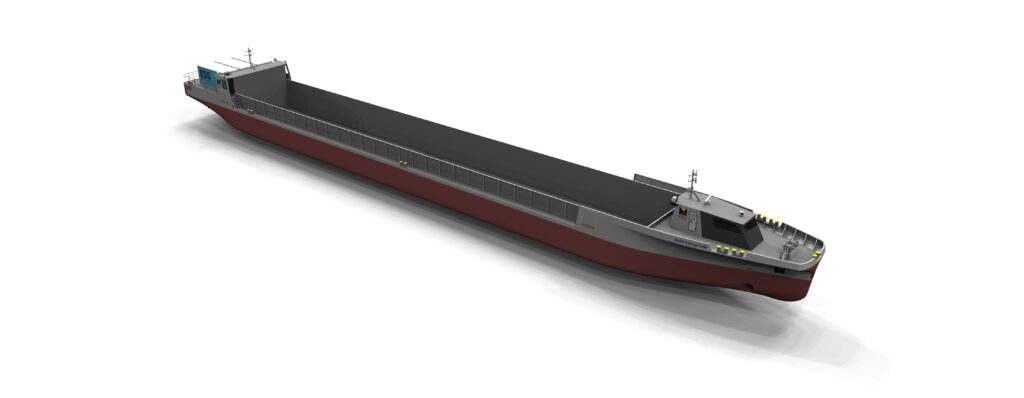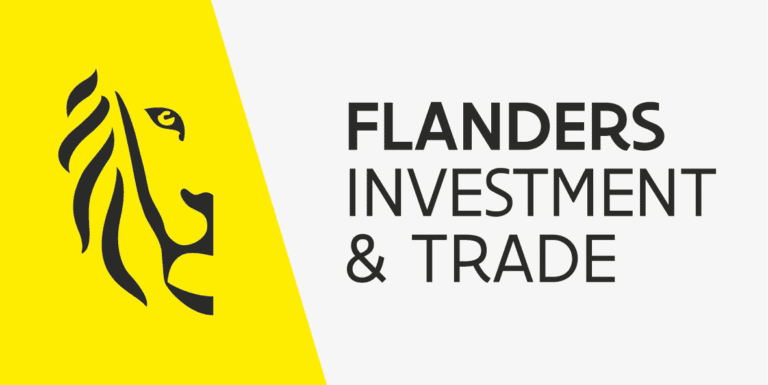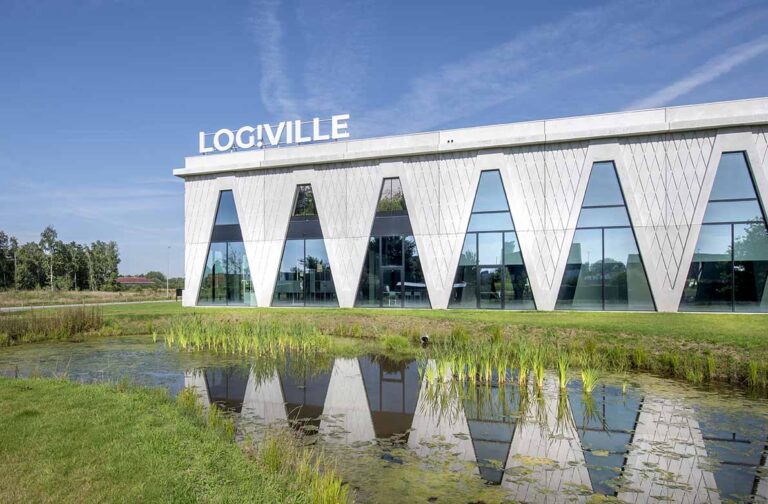Antoon Van Coillie (Zulu Associates): “Electric and autonomous sailing will make inland navigation future-proof”

Recently, Zulu Associates became Start2ScaleUp Partner of Log!Ville. Its arrival marks an expansion of Log!Ville’s ecosystem. With its concept – the X-Barge – it aims to future-proof inland navigation, traditionally a technology-shy sector. CEO Antoon Van Coillie explains why electric and autonomous sailing will finally make the modal shift possible and can dramatically affect supply chains.
Can you briefly introduce Zulu Associates?
Zulu Associates is a company that developed – and is realising – a concept that significantly greenens inland navigation while keeping it affordable versus diesel-powered barges. That concept – the X-Barge – involves our vessels being electrically powered and sailing autonomously – that is, unmanned while sailing – to offset the additional cost of that propulsion. People are therefore only needed for loading, unloading and maintenance.
The sailing itself is done autonomously, with a person in a control room ashore monitoring and, if necessary, steering the inland vessel. One person will eventually monitor five to six vessels simultaneously.
We are also developing that concept for maritime shipping – especially in the Channel traffic – where one person will be able to monitor and steer five to 10 vessels. That concept is called ‘Zulu Mass’.
Doesn’t the concept of semi-autonomous sailing already exist?
Indeed, Seafar offers similar technology. It already has a semi-autonomous barge in operation that is controlled by ‘remote control’. The big difference with our concept is that they retrofit existing (diesel) vessels to make them semi-autonomous. However, existing ships are very difficult to convert into ‘zero-emission’ ships.
Zulu Associates’ concept is disruptive, in the sense that we are talking about completely new ships, conceived to consume as little energy as possible and to run electrically. That poses challenges, as we use batteries that need to be recharged every day, whereas a diesel ship ‘bunkers’ every fortnight.
We face these challenges because inland navigation has to go green quickly and drastically.
So isn’t inland navigation the greenest mode of transport?
Most inland vessels are not green. In fact, the bulk of them should be taken out of service fairly soon, because they cannot meet future emission limits. Some 70% of Dutch dry bulk and container inland vessels – the largest and most modern fleet in Europe – are older than 50 years. And their engines are older than 10 years in most cases. So their NOx and particulate emissions are far too high and they score poorly on CO2, even per unit transported. The shape of their hulls also makes them energy-hungry, especially on small canals where water resistance is high.
So the driver for today’s inland navigation is congestion avoidance, not low emissions per tonne.kilometre anymore. On that front, the other modes are doing better today. I therefore think that no modal shift will happen with the existing ships. One reason is that they are too big.
Why are they too big?
As I indicated, they consume too much energy per tonne transported. A big ship on a small canal consumes up to 70% more energy. But the main reason is that they are not ‘time competitive’.
Between Genk and Antwerp, a container barge takes 12 hours to sail. Transhipment takes 3 minutes per TEU. If there are 300 TEU on board, loading or unloading takes about 15 hours. There are two people on board, who must have their night’s rest. Then the ship cannot sail. So the arithmetic is: 1 day loading, 1 day sailing, 1 day unloading or a total time of 3 days, for 120 km. So people will quickly tend to use trucks. Even including traffic jams, the transport time is 3-4 hours. In such circumstances, it is very difficult to achieve a modal shift.
So where does the X-Barge concept make a difference?
An X-Barge has a capacity of 90 TEU. So loading takes 270 minutes or just over 4 hours. Then you sail autonomously for 12 hours and have another 4 hours for unloading. The total time is then about 20 hours. A modal shift thus becomes much more feasible.
An additional advantage of smaller ships is that terminals can be smaller and they also need less buffer capacity. The infrastructure cost along waterways is therefore lower.

What are the other features of the X-Barge?
The design of the X-Barge lends itself to transporting containers as well as dry bulk and breakbulk. The hold is designed to give the hull a shape that makes the vessel particularly energy efficient. There is no crew on board, so there is no wheelhouse or accommodation on board. Electricity is therefore used solely for propulsion, instrument operation and anti-condensation heating.
Docking is done with a docking system at the terminal, with no personnel on board the barge.
And propulsion is entirely electric. There are already some electric ships in operation, such as the Alphenaar, but it only runs electric to a limited extent. Most of the time, that one uses the diesel engine. But that ship proves that electric sailing is possible.
Do you opt for batteries or hydrogen fuel cells?
We opt for the batteries. Hydrogen – which can be used not only in fuel cells but also in an internal combustion engine, as CMB Tech does – could be a possibility, but there are several problems: the certification of a ship with hydrogen tanks is not an obvious one, ‘green’ hydrogen is virtually unavailable and it is very expensive. Around 8 to 9 euros a kilo.
Batteries are a much simpler technology, evolving very quickly. In a 20-foot battery container, you stored 1 MW until not so long ago. Now it’s 2.5 to 3 MW. With three batteries on the ship, you sail 250 to 350 km fully electric.
Are they replaceable batteries?
They can but don’t have to be. You can perfectly recharge the batteries when the ship is at the quay, for instance during unloading and loading. Electric sailing is actually not rocket science. The difficulty lies in making electric sailing economically viable. We want to do that by eliminating personnel costs and making the ships’ deployment time-competitive.
Where does Zulu Associates stand on the realisation of the X-Barge concept?
The barge plans have been finalised and will be forwarded to some shipyards in early 2024. Based on their response, we will then make a choice. By the end of the first quarter of 2025, we hope to take delivery of the first two X-Barges and effectively launch them during that year. We will then have a year to prove our Proof of Concept.
Initially, the vessel will not be fully autonomous. There will still be a crew on board, which will control and support the systems running on artificial intelligence. First, we need to prove that the concept works efficiently and safely. After a year, we will sail without a crew.
Is legislation already adapted to autonomous sailing?
In Flanders, there are already exemption rules allowing autonomous sailing. In Wallonia, the first steps are being taken to do the same. In the Netherlands it is more difficult, because the skippers with traditional ships have an important lobbying machine. But we expect minds to open there too. After all, all over Europe there is a major staff shortage in inland navigation. And then autonomous sailing has an important advantage.
Zulu Associates recently became a partner of Log!Ville. What was your motivation?
Our concept is quite disruptive and thus fits into a framework like Log!Ville where new technologies are shown that will influence the logistics of the near future. In the inland navigation sector itself, we already enjoy a wide reputation, but not really outside. We want to show that our concept can indeed realise the modal shift and offer opportunities to improve supply chains. Log!Ville is the perfect platform to reach a wider audience.
Today we are still explaining the concept rather statically in our booth, but in early 2024 we will also show an animated film and a model of the X-Barge.
Are you also pursuing interaction at Log!Ville?
Definitely. We want not only to inspire visitors and other partners, but also to learn ourselves. As a ‘knowledge cluster’, Log!Ville is the perfect platform for this. Just think, for example, of the knowledge exchange we can achieve with C-Battery, the producers of handling robots or systems of automatic recognition of goods. Derivatives of such technologies can help us further develop our concept.



